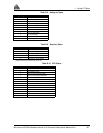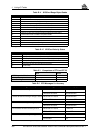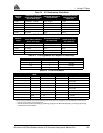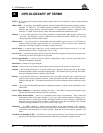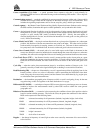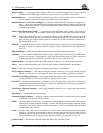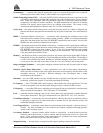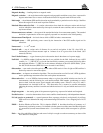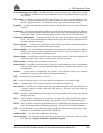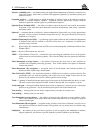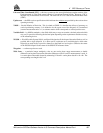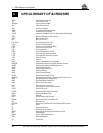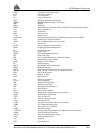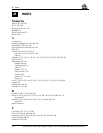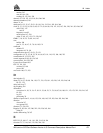
K GPS Glossary of Terms
264 MiLLennium GPSCard Software Version 4.50 Command Descriptions Manual Rev 1
Magnetic heading — heading relative to magnetic north.
Magnetic variation — the angle between the magnetic and geographic meridians at any place, expressed in
degrees and minutes east or west to indicate the direction of magnetic north from true north.
Mask angle — the minimum GPS satellite elevation angle permitted by a particular receiver design. Satellites
below this angle will not be used in position solution.
Matched Observation Set Pair — it contains observations from both the reference station and the local
receiver which have been matched by time epoch, contain the same satellites, and are corrected for
any known offsets.
Measurement error variance — the square of the standard deviation of a measurement quantity. The standard
deviation is representative of the error typically expected in a measured value of that quantity.
Measurement Time Epoch — the local time at which a GPSCard takes a measurement.
Multipath errors — GPS positioning errors caused by the interaction of the GPS satellite signal and its
reflections.
Nanosecond — 1 × 10
-9
second
Nautical mile — any of various units of distance for sea and air navigation; in the U.S. since 1959, an
international unit of linear measure equal to 1 minute of arc of a great circle of the Earth, 1,852
metres (6,076 feet).
Non-Volatile Memory — a type of memory device that retains data in the absence of a power supply.
Null field — by NMEA standard, indicates that data is not available for the field. Indicated by two ASCII
commas, i.e., ",," (HEX 2C2C), or, for the last data field in a sentence, one comma followed by either
the checksum delimiter "*" (HEX 2A) or the sentence delimiters <CR><LF> (HEX 0D0A). [Note:
the ASCII Null character (HEX 00) is not
to be used for null fields.]
Obscuration — term used to describe periods of time when a GPS receiver’s line-of-sight to GPS satellites is
blocked by natural or man-made objects.
Observation — an input to an estimation algorithm. The two observations used in NovAtel’s RTK algorithms
are the pseudorange measurement and the carrier phase measurement.
Observation Set — a set of GPSCard measurements taken at a given time which includes one time for all
measurements, and the following for each satellite tracked: PRN number, pseudorange or carrier
phase or both, lock time count, signal strength, and tracking status. Either L1 only or L1 and L2
measurements are included in the set. The observation set is assumed to contain information
indicating how many satellites it contains and which ones have L1-only and which ones have L1/L2
pairs.
Origin waypoint — the starting point of the present navigation leg, expressed in latitude and longitude.
Parallel receiver — a receiver that monitors four or more satellites simultaneously with independent channels.
P-Code (precise or protected) — a spread spectrum direct sequence code that is used primarily by military
GPS receivers to determine the range to the transmitting GPS satellite. Uses a chipping rate of 10.23
MHz.
PDOP — Position Dilution of Precision. This is related to GDOP. It describes the effects of geometry on 3
dimensional positioning accuracy. It is defined to be the square root of the sum of the three diagonals
of a normalized (assume measurement noise = 1) covariance matrix which correspond to position
error.
Pitch — the rising and falling of the bow and stern of a ship in a rough sea or the movement up or down of the
nose and tail of an airplane.




